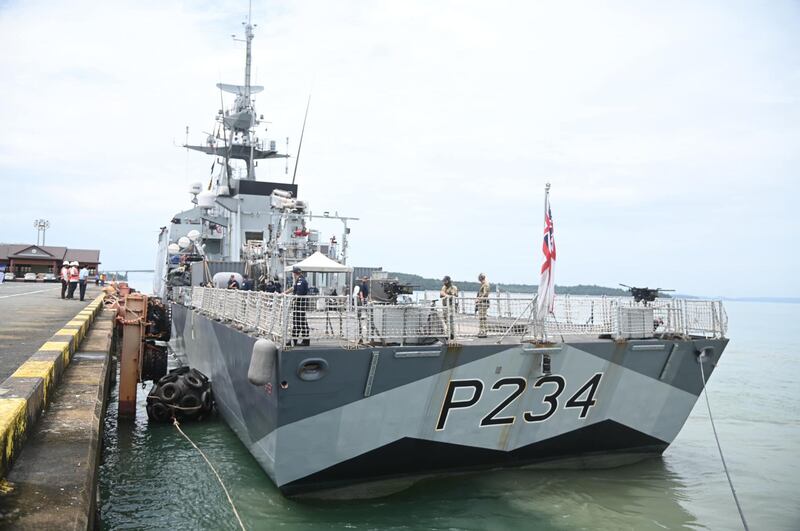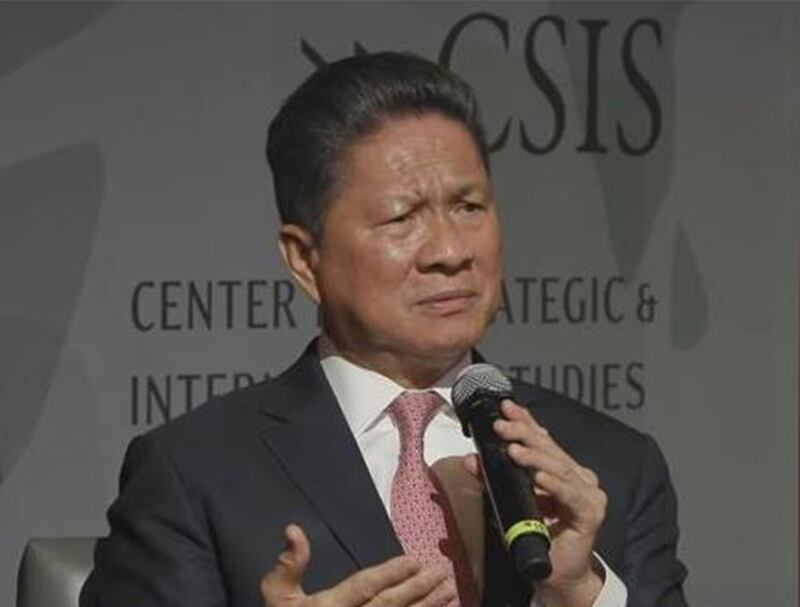Cambodia’s Chinese-funded Ream naval base would be open for visits by all foreign navies, including the U.S. Navy, when its construction is finished, said Deputy Prime Minister Sun Chanthol.
He was speaking at an event organized by the Southeast Asia Program at the Center for Strategic and International Studies, or CSIS, in Washington on Tuesday.
China has been developing the base in Sihanoukville province on the Gulf of Thailand for the Cambodian navy since 2021 to the alarm of the U.S. and some of Cambodia's neighbors. The U.S. has expressed "serious concerns" about China's apparent control over parts of the Cambodian facility.
“Ream Naval Base is not for the Chinese, the Chinese only provide assistance to expand the base for Cambodia's national defense, not to be used by the Chinese or any military against another country,” the Cambodian deputy prime minister told the audience.
“When this naval base is completed, any navy can call on that port, as long as it's for humanitarian and disaster recovery, or joint military exercise,” he said.
“Our constitution does not allow any foreign military to be in Cambodia, period,” he said, reiterating Cambodia’s often-repeated response to concerns about Chinese access to the base.

Up to now, while construction of a section of the base, including a deep-draft pier, is being carried out by Chinese personnel, no foreign warship has been allowed inside.
A British navy offshore patrol vessel, HMS Spey, was the latest to visit Cambodia from Sept. 23-27 when it conducted a joint exercise with the Cambodian navy but it only made a port call in Sihanoukville.
Near completion
The Ream naval base has seen a rapid expansion and extensive upgrade over the past year, according to satellite images. On-site observation by Radio Free Asia in August confirmed that besides the new deep-draft pier, it now has a dry dock, a wharf and several sets of big buildings including offices and barracks.
Witnesses told RFA that Chinese naval personnel have been “working day and night” to complete the project in order to transfer it to Cambodian control.
A spokesperson from the Cambodian ministry of defense, Maly Socheata, confirmed to foreign media in early September that the first phase of expansion of the Ream base had been completed and the second phase of work would be finished soon.
RFA also reported on China’s plan to donate two Type 056 corvettes to Cambodia, the same type of Chinese ship currently docked at Ream. Socheata confirmed the donation, which she said was requested by Cambodia to strengthen the navy’s capabilities but added that the vessels are being slightly modified.

Sun Chanthol, meanwhile, warned the U.S. only to bring small ships to Ream, saying, “The water is shallow. You might get stuck there.”
Collin Koh, senior fellow at the S. Rajaratnam School of International Studies in Singapore, said, after all the investment in the base, he expected that China would still have preferential access.
Koh believed that the arrangement is to give Beijing access to Ream’s facilities “predicated upon an on-demand basis, meaning they would have to be made available upon China’s request.”
RELATED STORIES
[ EXCLUSIVE: China to transfer 2 ships and pier to Cambodian navyOpens in new window ]
[ Cambodian naval base could accommodate Chinese submarines: analystOpens in new window ]
[ Chinese warships rotate at Cambodia’s Ream naval baseOpens in new window ]
Nevertheless, some of Cambodia’s neighbors still worry.
“A foothold at Ream would give China a better control over the Indo-China peninsula, especially Vietnam, and the South China Sea,” said Yusuf Unjhawala, an Indian defense analyst.
“Basically, it helps China control the seas inside the nine-dash line,” Unjhawala said, referring to the U-shape line on China’s maps that it refers to when it defends its claim to most of the South China Sea.
Vietnam, China, Brunei, Malaysia, the Philippines and Taiwan all claim part of the regional waterway but China’s claim is the most expansive.
Nguyen The Phuong, a Vietnamese military analyst currently at the University of New South Wales, said that Sun Chanthol’s statement “does not reduce the nervousness of other countries about the potential use of Ream as a Chinese forward deployed base.”
“I guess we should wait and see whether the promise will materialize or it’s just rhetoric,” Phuong told RFA.
Edited by Mike Firn and Taejun Kang.
